Above: Hugh Steers, “Breathing” (1987).
There exists today a massive crisis within the “gay” community that is a direct result of the intense trauma, particularly in “gay” men, experienced during the height of AIDS epidemic. The current rather conservative swerve towards embracing, what queer theorists used to call “heterocentric norms,” by a small subsect of the “gay” community in their rush towards same-sex marriage, parenthood, and social responsibility, I argue is not a sign of progress, but of intense panic.
For those of us, like myself, who lived through the 1980s and 90s, subconsciously, back then we all realized the “gay” experiment had failed us. I first saw this in the often myopic vision of ACT-UP and their repeatedly ugly and unfounded accusations against those who initially had very little to do with the rise of the AIDS epidemic. This hysteria of blame reached a violent apogee when a 1989 demonstration went out of control at St. Patrick’s Cathedral in New York City: a group of protestors entered the church, disrupted Sunday Mass, and one of them desecrated a consecrated host. At the time, although I was by no means a Catholic, hearing about these antics made me cringe; yet, I also thought – why do we care what the Catholic Church thinks? After all, that was the Church of our unaccepting parents. In hindsight, it was a desperate plea for attention; a demand for recognition from a God we rejected. Now, we were returning to Him, but in anger – because He had abandoned us. Something had gone wrong.
Next, I too remember becoming angry by the early-90s, after the “gay” community inconceivably shifted its focus, at a time when the death rates were at their highest, to what I thought was the non-issue of gays in the military. Now, I see this as a concerted move from desperation to avoidance. During the initial years of the AIDS epidemic, the late “gay” San Francisco based author and journalist Randy Shilts warned about the possible damage to the collective “gay” psyche if the devastation of AIDS was not properly addressed on an individual and community-wide basis:
“I don’t think that civil liberties are the most important thing. The gay political leadership is misguiding us by always talking about civil liberties. The most important thing for most gay men…is going to be just keeping sane in the face of all this suffering, because what I do know is going to happen is that we are going to be facing an incredible amount of untimely death…We need to begin gearing ourselves for it psychologically as human beings.”
But, it was never done: following the fight which ended with “Don’t ask, don’t tell,” almost simultaneously, modern science and the pharmaceutical companies, came up with new and more effective ways of extending the lives of those infected with HIV. With that out of the way, clearly in recent years, although not reaching the astronomical rates seen in the 1980s, HIV infections among “gay” men have continued to climb throughout the post-AIDS era. With an HIV diagnosis seen as a “manageable chronic disease,” the “safe-sex” practices of the 80s and early-90s have been almost completely abandoned; a recent study found that condom use is decreasing among all “gay” men, with the most significant decline in young men, aged 18 to 24. In 2005, 28.7% of HIV-negative men reported anal sex without a condom, during their last encounter; the percentage increased to 32.8% in 2008, 34.7% in 2011 and finally 40.5% in 2014; with HIV-positive men, the percentage is even higher at 44.5%.1
Although “gay” men are surviving HIV at much greater numbers, complacency has generated a resurgence of syphilis causing one CDC official to remark: “…we’re back to the level of disease – burden of disease – in “gay” men that we were seeing before HIV in this country.” In addition, there have been significant increases in the number of both rectal chlamydia and gonorrhea as well as the troubling virulence of antibiotic resistant strains and the presence of deadly meningitis outbreaks among otherwise healthy young “gay” men. The invention of still another artificial means of keeping the “gay” dream alive, the one-a-day pill PrEP, because of its high cost – favors the “gay” marriage elites, also its effectiveness hinges on never missing a dose. Furthermore, it doesn’t protect against STDs. No matter how you do it, “gay” doesn’t work. And, once the bugs inexorably figure out a way to prove their resilience, the delusions of men are laid dismally bare.
During a recent outreach at a San Francisco “Pride” Festival, I met a young man in his early-20s. When we talked about some of the ongoing health concerns in the “gay” community, he rather nonchalantly told me he had already been through several bouts of gonorrhea – just in the past two years. At times, our rather hurried conversation was drowned out by the incessant thumps of the amplified electronic dance music, the shouted rhetoric emanating from the jacked-up political agitators on the main-stage, along with the fomented chants of the crowd. In my generation, it was the call of Madonna to simply “Express Yourself” that successfully placated our very real concerns about contracting a fatal disease that, at the time, there was no effective treatment. Today, there are others voices, like Lady Gaga’s “Born this Way,” which claim there is no escape from your destiny. After a few minutes, he deep inhaled the wafting second-hand smoke from various passing blunts and walked away.
Nothing has changed. Even in the era of AIDS, the call to embrace our identity, to finally love ourselves, was too strong. Now, only the players and the DJ playlist are slightly different. For it has always been almost inescapable, because we had all survived the marked disapproval of our parents and families and the peculiar tortures inflicted upon us by vicious bullies, now we were being reborn to a community where limitless acceptance and affirmation was constantly available; where you would never feel different or be lonely again.
That was the fantasy that I grew up with while watching “The Village People” gyrate to their song “Go West” on the Merv Griffin Show. When most of us made it San Francisco, or LA, what we found was disturbing, but still better than what we left behind. Yet, the hopefulness that initially drew us to homosexuality, suddenly faded as we stood-by motionless watching a line of once beautiful young men fall silently into their graves. As a consequence, rather quickly, we needed to make a decision: to either take our chances in the “gay” bars and dance clubs and seek happiness through sexual freedom, or try to immediately pair-up with someone and find relative safety in monogamy. Only, it seemed that those who were permanently checking-out from the scene were older and increasingly disillusioned. Being young and still semi-fearless, I chose to dance till I dropped rather than die of domesticated boredom. Today, with death no longer looming quite as large, it’s easier to make the decision to stay. But the psychological damage remains massive and largely unaddressed.
Today, most of those who pushed for “gay” marriage were part of the latter group, or were those members of my generation that somehow survived to become older and similarly disillusioned. This movement from disco to domesticity goes part and parcel with a hypothetical process that Randy Shilts alluded to in his landmark 1987 book “And the Band Played On,” whereby “gay” male culture as a whole has been crossing through a series of phases, with rampant promiscuity being “central to the raucous gay movement of the 1970s,” slowly moving onto “serial monogamy, a series of affairs that may not last forever but that at least left you with a vague awareness of which bed you slept in most evenings.” One of the book’s more prolific characters believed: “that promiscuity was a means to exorcise the guilt and self-alienation ingrained in all gay men by a heterosexual society clinging to obsolete values of monogamy.” The final stage in the process is the comprehensive acceptance of “gay” marriage on both an individual and community wide basis. Highly influential Catholic priest John J. McNeill took up much the same theory in his book “Taking a Chance on God” from 1988. He wrote: “Usually after a period of sexual and social experimentation, a gay man or lesbian woman will yearn for a more stable, committed relationship that combines both physical and emotional attraction.” In some ways, the life of Randy Shilts mirrored these so called phases when the HIV-positive author left San Francisco with his partner and settled amongst the towering redwoods in a small Northern California town. He would die of AIDS shortly afterwards in 1994 at age 42.
However, since then, there has not been a mass exodus from sexual adventurism in “gay” male culture, it has merely changed forms. Today, the proverbial bathhouse has become superfluous and been replaced by the likes of Grindr and SCRUFF. These sorts of geosocial networking apps are especially suited for the male sexual psyche – by which men literally window shop through an endless stream of headless torso or crotch shots that resemble the focus of the camera in “gay” male porn. On-line profile preferences have replaced the hanky-codes of the 1970s – whereby the color of a cloth bandana, down to which pocket it was stuffed into, non-verbally signaled to other “gay” men your particular sexual fetish – forever removing the need for any forms of communication beforehand or after. On the Internet, this extreme impersonalism has been reduced to two all-important words: “top” or “bottom.”
Yet, as exhilarating as these seemingly transcendent initiations into the world of masculinity appear on the surface, they prove to be shallow, unfulfilling and devastatingly dehumanizing. Hence, the resulting disappointment almost always necessitates either flight or a further self-investment with finding solace through sex. This is why “gay” men, who may be otherwise cautious, at some point decide to take an enormous chance and attempt a more intimate form of bonding without the use of condoms. Others, who are already numb to the transitory moments of peace brought about by skin-to-skin contact will find within the “gay” community a fully integrated fetish scene that ranges from deceivingly playful to indescribably bloody. To partake in these intermediate extremes is overwhelming, to simply watch as a bystander, which one must do practically on the first day of entering the “gay” male community, carries with it its own set of indelible effects. But for those with an ever-present childhood need to be held and affirmed, no amount of sex, no matter how frightfully real it becomes, will make the emptiness go away. Only, everyone keeps trying and successively digs themselves in deeper. British born “gay” provocateur Milo Yiannopoulos, who has been unapologetic about his prodigious sexual appetites, admitted that: “I find it difficult now to get an erection without a gun to my head.”
By the late-90s, with AIDS virtually removed from civil discourse, some wanted to advance a completely different picture of homosexuality, appointing sedate middle-aged lesbian couples as representatives for the entire “gay” population. This type of image, which is clearly more palatable to the ordinary American, has proven highly successful. Helped along by the general proliferation of porn, which normalized once deviant behaviors, the remaking of homosexuality has greatly impressed the younger generations: 75% of self-identified Catholics age 18-29 said in a 2014 Pew Research Center survey that they support “gay” marriage. Yet, these shifts in public opinion are based on a fantasy. Tellingly, the new icons of “gay” respectability are probably best embodied in the insipid Ellen DeGeneres and Nate Berkus; since the revelation of infidelity in the happy manufactured Elton John family, not so much him. But it’s my contention that Grindr and the lurid cover for the 1979 Village People album “Live and Sleazy” depict the truths of male homosexuality: it’s aggressive, restless, sweaty, and ultimately unstable.
The current hysteria over same-sex marriage is an attempt by those who were heavily traumatized by the ravages of AIDS and the continued prevalence of loneliness and depression within the “gay” lifestyle, to somehow micro-manage male homosexuality. But, in attempting to do so, they utterly ignore the hormonal differences between men and women probably seen most dramatically in pop-culture sexual tastes with the overwhelming male penchant for pornography and the female preference for erotic literature; one is constantly wandering and laser-focused on a quick-fix, while the other tends to a more insular and safer form of imagination. I discovered another remarkable sex difference when I walked into my first “gay” bar – where the darkened restroom was a crammed and dripping entanglement of naked thrusting bodies. As a randy teenager, new to San Francisco, I reveled in that fact that I could procure free faceless uncomplicated sex in a matter of moments. Later, when I frequented drug-addicted female prostitutes, I never met a single one who would even momentarily entertain the thought of anonymous intercourse inside a dirty toilet stall; let alone unpaid sex. In addition, the brutal reality of gang-rape, which has no corollary among women, exposes the often unpredictable and highly volatile nature of male sexuality. Again, the observations of Randy Shilts are critical:
“…you had a gay male subculture in which there was nothing to moderate the utterly male values that were being adulated more religiously than any macho heterosexual could imagine…Promiscuity was rampant because in an all-male subculture there was nobody to say ‘no’ –no moderating role that a woman plays in the heterosexual milieu. Some heterosexual males privately confided that they were enthralled with the idea of the immediate, available, even anonymous, sex a bathhouse offered, if they could only find women who would agree. Gay men, of course, agreed quite frequently.”
This lure of instant male comradery is too alluring for most, even when faced with the possibility of exposure to multiple pathogens. As someone who “came-out” when HIV was a near inevitable and grisly death sentence, my heart goes out to all young men, like myself, who grew up feeling abandoned and despised. What homosexuality offers is an instantaneous pass to an all-male world of recognition and reconciliation that you spent most of your life desperately wanting to be a part of. Only, a world without women is one that inevitably goes berserk; nothing remains in balance. Towards my last days in San Francisco, I could see this disharmony in my own body as my backside, with the chronic “gay” male practice of enemas and douching, became a fertile breeding ground for increasingly painful yeast infections.
Recently I spoke to the Catholic mother of a “gay” son. Currently, he is living in San Francisco as an active homosexual. His background, not dissimilar to mine, to a certain extent set him up to be the willing boy in a series of relationships with older men. Because many of us who eventually turn towards homosexuality are already at a loss, once there the most vulnerable among us are especially susceptible to the promises made by men wanting to serve as surrogate “Daddies.” Except, where it took me several years to become burned-out and overly septic, this young man, only in his early-20s, has already consumed numerous rounds of antibiotics to stave off endlessly reoccurring STDs.
Despite the propaganda, the vast majority of “gay” men are choosing to remain in the mix. Those who do pair-up commonly form negotiated relationships in which the adherence to practice monogamy is often a highly wavering and ambiguous agreement that is constantly open to adjustment. In a study of partnered “gay” male couples in San Francisco, researchers found that: “Ninety nine percent of couples reported having an agreement. Specifically, 45% had monogamous agreements, 47% had open agreements, and 8% reported discrepant agreements.”2 In a similar study from probably the second most “gay” friendly city in the United States, New York City, researchers found a great propensity for “gay” men to engage in concurrent partnerships: “More than half (63.2%) described having concurrent sex partners…and 56.1% reported that both they and their partners had concurrent partners.”3
Before the Supreme Court decision legalizing “gay” marriage – according to a Gallup Poll, which included “gay” men as well as lesbians: 7.9% of “gay” adults were married, that percentage rose to 9.5% in 2016 and then reached a measly 10.2% two years after Obergefell v. Hodges, but has since leveled off. In comparison, according to US census data, although heterosexual marriage has continued to decline in recent years: about 50% of men and women age 18 or over are married. I always found it interesting that the main impetus behind the filing of the Obergefell case was the terminal illness, in middle-age, of the complainant’s partner.
The “gay” male experiment, a world without women, has failed. The domination of the drag queen in contemporary “gay” culture reveals both the scope of the catastrophe and the unwillingness of the community to comprehend the problem. They realize something has gone wrong, that something fundamental is missing, but instead of recognizing the failure, out of fear, they caricaturize it. Still, others retreated into a sappy bourgeois conception of the family that is highly reminiscent of the 1950s television sitcom; it’s the reality they wanted, but never had.
Yet, especially among “gay” men, stability is catastrophically lacking and the male sex-drive proves uncontrollable when unleashed within a group of similarly needy men. The same phenomena is witnessed among “gay” women, except where the overload of testosterone in male homosexuality caused a runaway sex culture, rampant disease and dissatisfaction, in the equally dysfunctional parallel world of lesbians, ruled by unchecked amounts of estrogen, persists an almost opposite effect of hyper-emotionalism. Where “gay” men focused almost solely on the body, women became fixated on the drama within female relationships which spun out increased rates of domestic violence, substance abuse and obesity.4 The greatest tragedy remains that homosexuality contains no real safe-spaces. Because today, the majority of “gay” men are infected with HIV, not from a stranger, but from their main partner.5
Studies cited:
1. “Trends in condom use among MSM in the United States: the role of antiretroviral therapy and seroadaptive strategies.”
Paz-Bailey G, et al.
AIDS. 2016 Jul 31;30(12):1985-90.
2. “Relationship Characteristics and Motivations behind Agreements among Gay Male Couples: Differences by Agreement Type and Couple Serostatus”
Colleen C. Hoff, PhD., et al.
AIDS Care. 2010 Jul; 22(7): 827–835.
3. “Concurrent partnerships and HIV risk among men who have sex with men in New York City.”
Tieu HV, et al.
Sex Transm Dis. 2014 Mar;41(3):200-8.
4. “Substance use and domestic violence among urban gays, lesbians and bisexuals.”
Bimbi DS, et al.
J LGBT Health Res. 2007;3(2):1-7.
“Overweight and Obesity in Sexual-Minority Women: Evidence From Population-Based Data”
Ulrike Boehmer, PhD, et al.
Am J Public Health. 2007 June; 97(6): 1134–1140.
5. “Nearly 70% of HIV+ MSM are estimated to have contracted HIV from a main partner…Our data suggest that reported monogamy may sometimes reflect intent or a non-traditional definition of monogamy rather than engagement in sex with only one partner. Nearly a quarter of men who indicated that they had only had sex with their partner for the duration of their relationship also reported engagement in anal sex with at least one non-main partner in the past 90 days. This supports previous research showing ‘monogamy’ to be an ambiguous term…”
“Open, Closed, or In Between: Relationship Configuration and Condom Use among Men Who Use the Internet to Seek Sex with Men”
Sonya S. Brady, et al.
AIDS Behav. 2013 May; 17(4): 1499–1514.
“Men who have sex with men (MSM) in primary relationships engage in condomless sex both within and outside their relationships and a majority of HIV transmission risk may actually occur within primary relationships.”
“Relationship Power, Sociodemographics, and Their Relative Influence on Sexual Agreements Among Gay Male Couples.”
Perry NS, et al.
AIDS Behav. 2015 Sep 21.
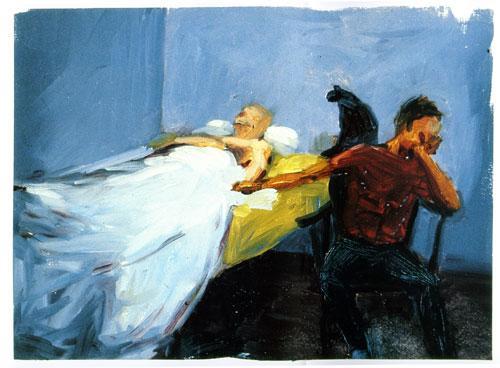

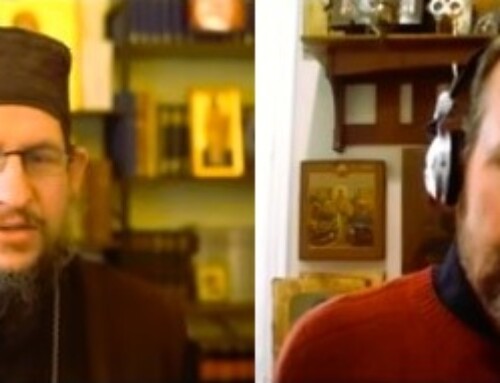
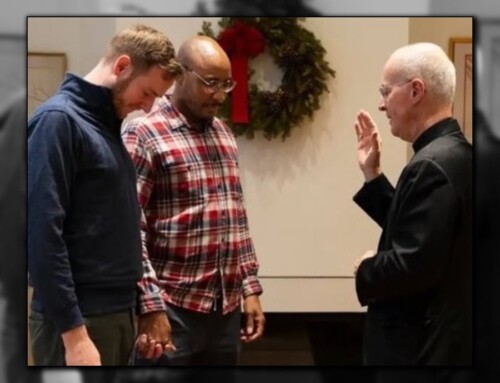
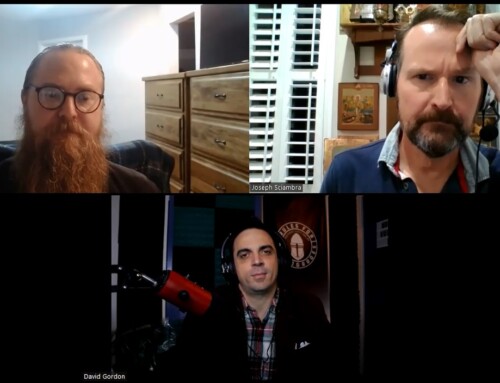
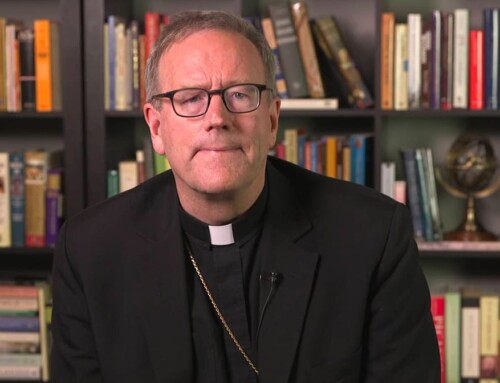
Thanks be to Christ for giving you the strength to stand for the truth, Joseph, even against all the propaganda of the worldly, who are the real ones to have become increasingly abnormal. It is only in Christ and the Holy Spirit that we can be restored towards God’s gentle provision of normality in human relations, instead of profound alienation from Him, from each other and ultimately ourselves. I know this is not cost free for you, but the greatest cost was already paid for us.
Your experiences mirror my own decades earlier in Los Angeles. Happily married now for decades with three natural born adult children, I have experienced job loss and persecution for opposing LGBTQ celebration in our church, co-opted by radicals, with those in te pews having zero idea of realities outside Hollywood and media propaganda.
Sharing a very similar history, although just a few years older than you, I marvel at your heroism in addressing the depth issues men shouldering same sex attraction deal with – but by far most often avoid. Your review of the history of the eighties and nineties, the rage, the despair, the endless deaths – it brought back many memories of life on Christopher Street. There are many phrases in this essay that struck me to the heart but … “For those of us, like myself, who lived through the 1980s and 90s, subconsciously, back then we all realized the “gay” experiment had failed us.” … that encapsulates much of the history of the past forty years.
Standing at the foot of the deathbed of a simple acquaintance in 1984 I remember clearly thinking the entire “gay” enterprise to be nothing but a lie, but I could not, would not, extricate myself from it for fifteen years.
Scores of deaths followed.
And now we have priests, themselves spiritually, cognitively and emotionally impaired, encouraging self-deception which leads — at best — to a dead end. Far more often, far worse.
Yet they all continue to kick against the goad.
May God watch over you, uphold you, in this your apostolate, and reward you in abundance.
how can I subscribe?
I recall Fr. Benedict Groeschell saying that one of the leaders of the Act Up demonstration at St. Patrick’s totally repented for his desecration of the Eucharist and came back to the Church before dying of AIDS.
Joseph, how do doctors handle men who are coming in with health problems related to gay sex? Do doctors actually tell it to you straight (no pun intended)? Or are they as mute. You’ve told us how priests fail gay men — are doctors any better?
Only lightly touched on in the article, is the meteoric rise in other diseases besides HIV in the gay community. There is a concerted effort to keep those in the straight world ignorant of the rampant growth of gay related sexually transmitted infections. There are a number of these ailments and some have life long adverse effects. Before I retired, I worked for a clinical laboratory and an institutional pharmacy. and have seen a number of medical situations that are almost totally restricted to gays. While there are clinics that purport to offer medical advice on “safe sex”, there is really almost no such thing especially among those with undisciplined appetites.
The spiritual values that moderate sexual behavior are entirely absent in the gay community; and excess is not considered a vice. Restrain isn’t even mentioned.
This is why there is hostility toward Christianity. It hinders the full acceptance of hedonism in all of its various forms. The more secular and unrestrained that a society gets; the more it targets religion for marginalization.
I wonder if you have heard of a man so named ‘Dr. Anal.’ He gives sex advice on how to have ‘proper’ anal sex, and encourages more and more young people to have it. Tellingly, the harms of this sex act are listed at the back of the book.
https://www.kobo.com/ca/en/ebook/anal-pleasure-and-health-a-guide-for-men-women-and-couples